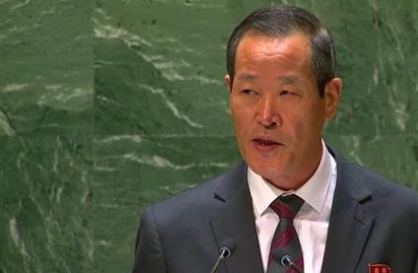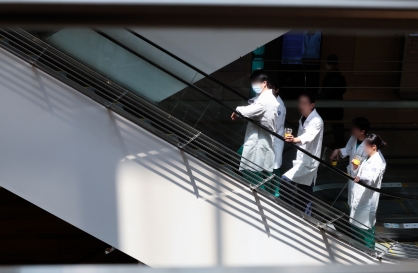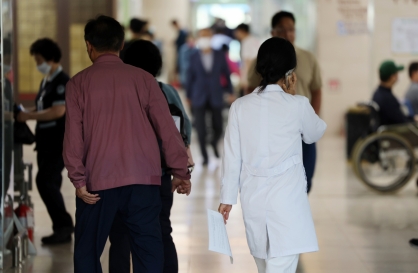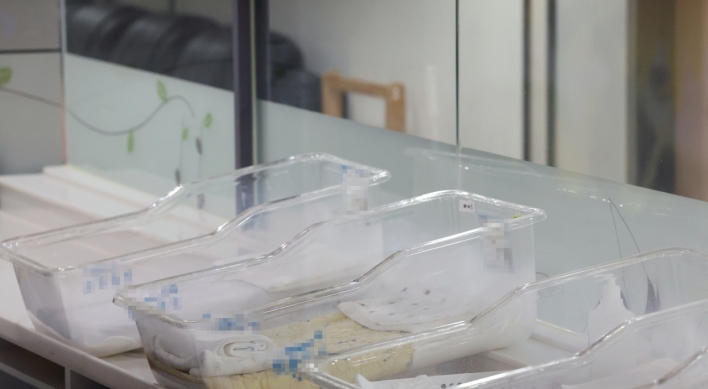암 환자 중 고소득층의 생존율이 저소득층에 비해 뚜렷하게 더 높은 것으로 조사되었다.
한국보건사회연구원에 따르면 소득 5분위(상위 20%)에 속하는 남성 암환자들은 5년 생존율이 37.84%였으며, 이는 소득 1분위(하위 20%)의 5년 생존율인24.04%보다 13.80% 높은 수치다. 3년과 1년 생존율 격차도 각각 14.32% 포인트 14.69% 포인트 차이 났다.
이 연구는 윤태호 부산대 교수 등이 건강보험공단 및 국가암등록자료을 바탕으로 실시한 것이다.
이러한 소득에 따른 건강 불평등은 치료 과정에서부터 차이가 난다.
고소득층은 남녀 불문하고 한국 상위 4대 병원을 이용하는 반면, 저소득층은 동네 종합병원이나 병의원을 주로 이용하는 것으로 나타났다.
심지어 이러한 현상이 대물림 되는 추세로 보여지는데 “건강상태가 좋지 않다”라고 덥변한 남학생의 비율이 학력이 대졸이상 보다 중졸이하인 아버지의 가정에서 높게 나왔다.
흡연비율도 역시 저학력인 아버지들 밑에서 자란 남학생들이 8.5% 높았다.
최경희 이화여대 교수는 여성 암 환자를 대상으로 조사한 결과 30세에서 44세 중졸이하인 환자의 사망률이 대졸이상 그룹보다 8.1배 높았다고 발표했다.
또한 중졸이하인 남성이 자살확률도 대졸남성보다 7.1배 높은 것으로 집계됐다.
한국보건사회연구원에 따르면 소득 5분위(상위 20%)에 속하는 남성 암환자들은 5년 생존율이 37.84%였으며, 이는 소득 1분위(하위 20%)의 5년 생존율인24.04%보다 13.80% 높은 수치다. 3년과 1년 생존율 격차도 각각 14.32% 포인트 14.69% 포인트 차이 났다.
이 연구는 윤태호 부산대 교수 등이 건강보험공단 및 국가암등록자료을 바탕으로 실시한 것이다.
이러한 소득에 따른 건강 불평등은 치료 과정에서부터 차이가 난다.
고소득층은 남녀 불문하고 한국 상위 4대 병원을 이용하는 반면, 저소득층은 동네 종합병원이나 병의원을 주로 이용하는 것으로 나타났다.
심지어 이러한 현상이 대물림 되는 추세로 보여지는데 “건강상태가 좋지 않다”라고 덥변한 남학생의 비율이 학력이 대졸이상 보다 중졸이하인 아버지의 가정에서 높게 나왔다.
흡연비율도 역시 저학력인 아버지들 밑에서 자란 남학생들이 8.5% 높았다.
최경희 이화여대 교수는 여성 암 환자를 대상으로 조사한 결과 30세에서 44세 중졸이하인 환자의 사망률이 대졸이상 그룹보다 8.1배 높았다고 발표했다.
또한 중졸이하인 남성이 자살확률도 대졸남성보다 7.1배 높은 것으로 집계됐다.
<관련 영문 기사>
Health disparity widens between rich and poor: study
By Cho Chung-un
Cancer patients from high-income families have a much higher survival rate than their low-income counterparts, a report showed Tuesday.
According to the Korea Institute for Health Affairs, the five-year survival rate of male cancer patients in the top 20 percent income bracket was 37.84 percent, 13.80 percentage points higher than those in the bottom 20 percent. Three-year and one-year survival rates of patients from the two income groups also differed by 14.32 percentage points and 14.69 percentage points, respectively.
The research led by Yoon Tae-ho, a professor at Busan National University, is based on data from the National Health Insurance Corp. and Statistics Korea, KIHASA said.
Health care inequality between the rich and poor may stem from differences in the level of medical choices.
A majority of patients in the high-income bracket, regardless of gender, received overall treatments at the nation’s top four general hospitals while people in the lower-income group usually went to regional hospitals or clinics.
The widening medical inequality is likely to be passed on to patients’ children.
The percentage of male students who believed they were unhealthy was higher in the group of respondents who had poorly educated fathers than the group of children with highly educated fathers.
The smoking rate of male students whose fathers had a low level of education was 8.5 percentage points higher than the comparison group.
Another relevant report found health inequality linked to educational background.
According to the report by Chung Choi Kyong-hee, a professor at Ewha Womans University, the death rate of poorly educated female cancer patients aged between 30 and 44 was 8.1 times higher than those with a college diploma.
The chance of men with low educational levels committing suicide was 7.1 times higher than that of well-educated men, the report added. (christory@heraldcorp.com)
Health disparity widens between rich and poor: study
By Cho Chung-un
Cancer patients from high-income families have a much higher survival rate than their low-income counterparts, a report showed Tuesday.
According to the Korea Institute for Health Affairs, the five-year survival rate of male cancer patients in the top 20 percent income bracket was 37.84 percent, 13.80 percentage points higher than those in the bottom 20 percent. Three-year and one-year survival rates of patients from the two income groups also differed by 14.32 percentage points and 14.69 percentage points, respectively.
The research led by Yoon Tae-ho, a professor at Busan National University, is based on data from the National Health Insurance Corp. and Statistics Korea, KIHASA said.
Health care inequality between the rich and poor may stem from differences in the level of medical choices.
A majority of patients in the high-income bracket, regardless of gender, received overall treatments at the nation’s top four general hospitals while people in the lower-income group usually went to regional hospitals or clinics.
The widening medical inequality is likely to be passed on to patients’ children.
The percentage of male students who believed they were unhealthy was higher in the group of respondents who had poorly educated fathers than the group of children with highly educated fathers.
The smoking rate of male students whose fathers had a low level of education was 8.5 percentage points higher than the comparison group.
Another relevant report found health inequality linked to educational background.
According to the report by Chung Choi Kyong-hee, a professor at Ewha Womans University, the death rate of poorly educated female cancer patients aged between 30 and 44 was 8.1 times higher than those with a college diploma.
The chance of men with low educational levels committing suicide was 7.1 times higher than that of well-educated men, the report added. (christory@heraldcorp.com)




![[Weekender] Korean psyche untangled: Musok](http://res.heraldm.com/phpwas/restmb_idxmake.php?idx=644&simg=/content/image/2024/05/02/20240502050841_0.jpg&u=)



![[Eye Interview] 'If you live to 100, you might as well be happy,' says 88-year-old bestselling essayist](http://res.heraldm.com/phpwas/restmb_idxmake.php?idx=644&simg=/content/image/2024/05/03/20240503050674_0.jpg&u=)








![[Herald Interview] Director of 'Goodbye Earth' aimed to ask how we would face apocalypse](http://res.heraldm.com/phpwas/restmb_idxmake.php?idx=652&simg=/content/image/2024/05/03/20240503050732_0.jpg&u=)
